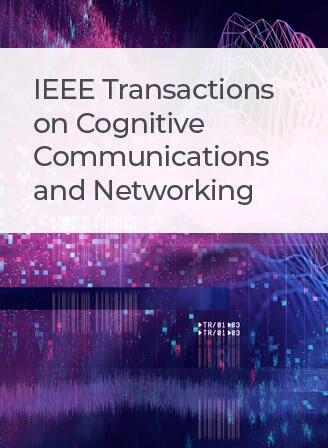利用反向散射自共轭元表面实现无赠予随机存取
IF 7.4
1区 计算机科学
Q1 TELECOMMUNICATIONS
IEEE Transactions on Cognitive Communications and Networking
Pub Date : 2024-09-09
DOI:10.1109/TCCN.2024.3449648
引用次数: 0
摘要
最近,无赠予随机存取(GFRA)方案作为一种在新型工业物联网和数字双胞胎应用中实现极低延迟和短数据包传输的解决方案,受到了研究界的极大关注。然而,由于需要多输入多输出(MIMO)链路来抵消高路径损耗并提供足够的空间滤波,在毫米波和太赫兹频段实施此类方案具有挑战性。这导致信道估计的信令开销、接入点(AP)和传感器之间缓慢的波束对准程序,以及传感器的高复杂性和高能耗。在本文中,我们建议在传感器端采用自共轭元面(SCM),即接入点发送的信号在根据传感器要传输的数据进行共轭和相位调制后进行反向散射。我们介绍了一种新颖的基于 SCM 的 GFRA 协议,它能检测新传感器,并以极低的延迟建立并行多输入多输出上行链路通信。这是以盲方式实现的,无需在传感器端进行射频链和数字处理,也无需明确的信道估计和耗时的波束对准方案。本文章由计算机程序翻译,如有差异,请以英文原文为准。
Grant-Free Random Access With Backscattering Self-Conjugating Metasurfaces
Recently, grant-free random access (GFRA) schemes have received significant attention by the research community as a solution for extremely low-latency and short packet transmissions in new industrial Internet-of-Things and digital twins applications. However, implementing such schemes in the mmWave and THz frequency bands is challenging due to the need for multiple-input multiple-output (MIMO) links to counteract the high path loss and provide sufficient spatial filtering. This results in unacceptable signaling overhead for channel estimation, slow beam alignment procedures between the access point (AP) and the sensors, as well as high sensor complexity and energy consumption. In this paper, we propose the adoption of a self-conjugating metasurface (SCM) at the sensor side, where the signal sent by the AP is backscattered after being conjugated and phase-modulated according to the data to be transmitted by the sensor. We introduce a novel SCM-based GFRA protocol enabling the detection of new sensors and the establishment of parallel MIMO uplink communications with extremely low latency. This is achieved in a blind manner, eliminating the need for radiofrequency chains and digital processing at the sensor side, as well as explicit channel estimation and time-consuming beam alignment schemes.
求助全文
通过发布文献求助,成功后即可免费获取论文全文。
去求助
来源期刊

IEEE Transactions on Cognitive Communications and Networking
Computer Science-Artificial Intelligence
CiteScore
15.50
自引率
7.00%
发文量
108
期刊介绍:
The IEEE Transactions on Cognitive Communications and Networking (TCCN) aims to publish high-quality manuscripts that push the boundaries of cognitive communications and networking research. Cognitive, in this context, refers to the application of perception, learning, reasoning, memory, and adaptive approaches in communication system design. The transactions welcome submissions that explore various aspects of cognitive communications and networks, focusing on innovative and holistic approaches to complex system design. Key topics covered include architecture, protocols, cross-layer design, and cognition cycle design for cognitive networks. Additionally, research on machine learning, artificial intelligence, end-to-end and distributed intelligence, software-defined networking, cognitive radios, spectrum sharing, and security and privacy issues in cognitive networks are of interest. The publication also encourages papers addressing novel services and applications enabled by these cognitive concepts.
 求助内容:
求助内容: 应助结果提醒方式:
应助结果提醒方式:


